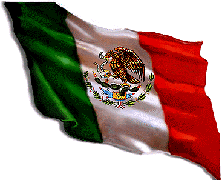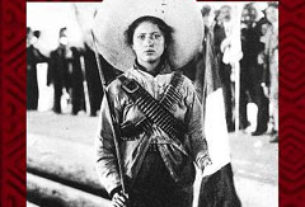 On the night of September 15, 1910, the special envoys stood on the illuminated balconies of the National Palace and watched the fiesta of all fiestas on the Mexican civil calendar: the grito de independencia, the “cry of independence.” One hundred years earlier (less a few hours) at dawn on Sunday, September 1810 — while Napoleon’s troops were occupying Spain and King Ferdinand VII was still in captivity — Miguel Hidalgo y Costilla, a fifty-seven-year-old priest from an old family of criollos (Mexican-born Spaniards) had suddenly begun to harangue his parishioners in the small town of Dolores in the state of Guanajuato, “seducing them” (according to a chronicle of the time) to rise up in arms — even with stones, slings, sticks or spears — in order to defend their religion against the “French heretics” who had occupied Spain since 1808 and now threatened to come over to the Americas.
On the night of September 15, 1910, the special envoys stood on the illuminated balconies of the National Palace and watched the fiesta of all fiestas on the Mexican civil calendar: the grito de independencia, the “cry of independence.” One hundred years earlier (less a few hours) at dawn on Sunday, September 1810 — while Napoleon’s troops were occupying Spain and King Ferdinand VII was still in captivity — Miguel Hidalgo y Costilla, a fifty-seven-year-old priest from an old family of criollos (Mexican-born Spaniards) had suddenly begun to harangue his parishioners in the small town of Dolores in the state of Guanajuato, “seducing them” (according to a chronicle of the time) to rise up in arms — even with stones, slings, sticks or spears — in order to defend their religion against the “French heretics” who had occupied Spain since 1808 and now threatened to come over to the Americas.
What Hidalgo intended — and accomplished — was to launch his flock against the hated gachupines (Spaniards born in Spain and living in Mexico) “who had been exploiting the wealth of the Mexican people with the greatest injustice for three hundred years.” Within a month, he had been joined by more than fifty thousand men, mainly Indians from the poorest levels of society. Attracted by his religious magnetism and by other, less noble motives, this multitude devastated the cities of San Miguel, Celaya, and Guanajuato and were on the point of entering Mexico City when Hidalgo ordered them to retreat.
A few months later, in July of 1811, he was tried by the Inquisition, condemned by the civil authorities, and executed. But by then the seed had begun to sprout. It took the form of a long and violent social earthquake, almost without precedent in New Spain or the Americas: the Mexican War of Independence – a truly popular movement led by four hundred armed parish priests – only to be compared in its fury with the uprising of black slaves in Santo Domingo in 1801, and the Indian rebellion of Tupac Amaru (1781) in Peru.
Not many remembered the revolutionary aspect of the War of Independence on that night of nights in 1910. As in every other year, what really mattered was going to the Zócalo (central plaza) to participate in the ritual of the grito. According to witnesses pressent at the original event, Hidalgo and then his followers had shouted “¡Mueran los gachupines! Viva la Virgen de Guadalupe!” (“Death to the Spaniards! Long live the Virgin of Guadalupe!”), but after one hundred years, time, good manners, and the secularization had transformed the ritual from the call for a holy war, to a peaceful, patriotic affirmation.
At 11:00 pm on that September, 1910, President Porfirio Díaz stood on the main balcony of the National Palace, and once again rang the same bell Hidalgo had rung in Dolores. He shouted several vivas: “Long Live the Heroes of the Nation!” “Long Live the Republic!” Below him, in the majestic zócalo that, from the days of the Aztecs had been the ceremonial heart of the Mexican Nation, a hundred thousand voices shouted in reply “¡VIVA!”
But why had the President delivered this grito on the night of the September 15th rather than at dawn on September 16th, when it all really began? A minor historical licence: September 15 was the Day of Saint Porfirio (a Greek saint of the fourth century) and the birthday of President Porfirio Díaz.
Abstracted from “Mexico: Biography of Power” by Enrique Krauze, Harper Collins, 1997. pp. 11 & 12.

